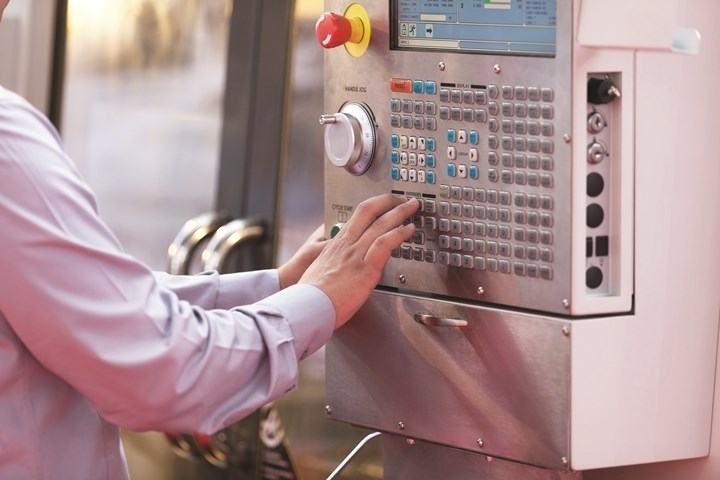Beyond Toolpaths: Four Additional Priorities for CNC Programs
An effective CNC program respects considerations such as ease of use and program-to-program consistency that go beyond just driving the machine in a particular application.

Everyone in manufacturing should easily agree that CNC programs have a big impact on productivity. Well thought-out, properly structured and user-friendly programs generate more output than ill-conceived, poorly developed and troublesome programs.
I am referring to the program that CNC setup people and operators see — the G-code program running in the CNC machine. This program may have been manually written, in which case the programmer was in total control of every aspect of how the machine runs. Alternatively, the G-code program may have been developed by a CAM system. In this case, the programmer relinquished control of how the machine will behave to the CAM system.
While CAM systems vary in their ability to appropriately generate G-code programs, nothing beats the intimacy manual programmers have with the machine when creating the G code. This advantage encompasses more than the machining program that produces workpieces. There are countless G-code techniques that can be employed to help with workholding setup, cutting tool measurement and offset entry, simplification of setup and production running tasks and safety. Most CAM systems do not take advantage of these techniques — at least not automatically.
I am not advocating for a switch to manual programming; instead, I am asking that users consider the quality of the G-code programs their CAM system are producing and, if necessary, find ways to improve them. This may require a better understanding of G-code than they currently possess, so some G-code skills training may be required. And it will also require that they learn how to modify the output generated by the CAM system to minimize the number of G-code-level program edits required.
Some of these productivity-enhancing techniques involve parametric programming, which in FANUC terms is “custom macro.” Some CAM systems are incapable of generating parametric programming commands, so again, users must work at G-code level to incorporate the related techniques.
So how can CNC programs affect productivity? And what can be done to improve the G-code program? I will explore these topics in the four upcoming CNC Tech Talk columns. For now, in the spirit of a high-level view, here are four important priorities well-written CNC programs should follow in addition to defining the tool paths of the machine. I will be offering suggestions and examples in each of these four categories in the months to come:
1. Ensure consistency and compatibility among programs.
Consistency among the programs that run on a given machine — or type of machine — will help setup people and operators become familiar with programming methods. They will be more easily able to spot mistakes if/when they notice inconsistencies. As for compatibility, there may be similar machines made by multiple machine builders that have different programming commands for similar functions. In this case, maintain nearly duplicate programs for each machine. Make programs compatible among similar machines used to produce the same components to minimize the number of required programs.
2. Make programs as easy to use as possible.
Simple tasks can always be accomplished faster than complicated tasks, so making programs more operator friendly will surely improve productivity. Not only that, task simplification reduces the potential for mistakes that lead to wasted time, scrapped workpieces and dangerous situations. Programming methods dramatically affect how easy it is to run parts. With so many newcomers entering our field, keeping things simple is a necessity.
3. Never sacrifice safety.
Programming methods should never put the setup person or operator in danger, nor should they potentially damage the machine. And, of course, the programs need to make good parts. As mentioned, minimizing the potential for mistakes will enhance safety. But this is just one of many program-related functions that affects safety.
4. Make programs run efficiently.
Improvements in the three productivity-affecting categories just mentioned will have a positive impact on efficiency. When programs are more understandable, easier to run and safer, they can be run more quickly. But there are additional CNC programming methods that specifically impact efficiency. Many of them cost nothing to employ and are simply related to the way the G-code program is structured.
Admittedly, it can sometimes be difficult to improve in one of these four categories without adversely affecting the others. Something that improves efficiency, for instance, may make the program more difficult to run or possibly more dangerous. Something that makes it easier to run programs may take longer. In the coming CNC Tech Talk columns, I will show techniques that improve productivity in one area without adversely affecting productivity in others.
Many of the techniques discussed have been the topics of previous columns, but I’ve never shown them in quite this context. And I will only scratch the surface of potential improvements with the examples I offer. My hope is that readers will use these considerations and examples as a starting point to consider improvements in their own CNC environment.
Read Next
3 Mistakes That Cause CNC Programs to Fail
Despite enhancements to manufacturing technology, there are still issues today that can cause programs to fail. These failures can cause lost time, scrapped parts, damaged machines and even injured operators.
Read MoreThe Cut Scene: The Finer Details of Large-Format Machining
Small details and features can have an outsized impact on large parts, such as Barbco’s collapsible utility drill head.
Read MoreObscure CNC Features That Can Help (or Hurt) You
You cannot begin to take advantage of an available feature if you do not know it exists. Conversely, you will not know how to avoid CNC features that may be detrimental to your process.
Read More
.jpg;width=70;height=70;mode=crop)







.png;maxWidth=300;quality=90)













